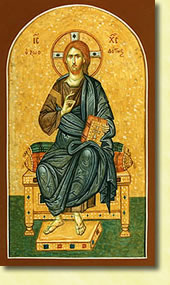1 Kings 17: 8-16
Hebrews 9:24-28
Mark 12:38-44
 When I was a child I already showed signs that I was going to be a theologian when I grew up. I used to wonder about things like this: If Jesus is everywhere, then is Jesus sitting in this chair? If I sit down in the chair, will I sit on Jesus? If Jesus is in my heart, how did he get small enough to fit there? If Jesus is in other people’s hearts too, does that mean that there are lots of little Jesus’s, with each person having their own Jesus living in their heart?
When I was a child I already showed signs that I was going to be a theologian when I grew up. I used to wonder about things like this: If Jesus is everywhere, then is Jesus sitting in this chair? If I sit down in the chair, will I sit on Jesus? If Jesus is in my heart, how did he get small enough to fit there? If Jesus is in other people’s hearts too, does that mean that there are lots of little Jesus’s, with each person having their own Jesus living in their heart?
Of course, such speculation is nothing new. The Medieval theologian William of Ockham (not one of my favorites by the way) once speculated that in God’s absolute power God could make it possible for the eye of Christ in one part of the eucharistic host to see another part of the body of Christ in another part of the host. And, of course, those who have taken my Anglican way of theology class or other courses at Trinity in church history or sacramental theology should know that a central cause of disagreement at the time of the Reformation had to do with the problem of how we relate the risen body of Christ to the consecrated elements of bread and wine in the Eucharist, with the Lutherans insisting that because Christ’s body is everywhere, there is no problem with him also being present in the bread and wine, while the Reformed insisted that, since Christ’s body is at the right hand of God the Father, he cannot be physically present in the bread and wine, so he must be spiritually present—whatever that means.
As I read the epistle for this morning, I could not help but be reminded of my old childhood questions, and of all these controversies in church history. There is a sense in which the writer of Hebrews is addressing the central issue that lay behind my childhood questions, and behind the Reformation controversies about Eucharistic theology. He situates the issue by laying out a timeline with a beginning point and an end point. The beginning point is the earthly mission of Jesus, in which through his incarnation, life, death, and resurrection Jesus has, says the author, “appeared once for all, at the end of the ages to put away sin by the sacrifice of himself.” The end point will be Jesus’ return: “So Christ, having been offered once to bear the sins of many, will appear a second time, not to deal with sin but to save those who are eagerly awaiting him.” (Heb. 9:28). If the beginning point of the timeline is Jesus’ life, death, and resurrection in which he put away sin, and the end point is his returning to bring salvation to those whose sins he has put away, the question that comes to mind is: “Where is Jesus now, and what is he up to?” The writer of the epistle to the Hebrews answers the question this way: “For Christ has entered not into holy places made with hands, which are copies of of the true things, but into heaven itself, now to appear in the presence of God on our behalf.” (Heb. 9:24.) (more…)


